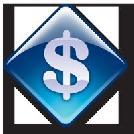
 |
|
| Financial Terms | |
| GNP |
|
Information about financial, finance, business, accounting, payroll, inventory, investment, money, inventory control, stock trading, financial advisor, tax advisor, credit.
Main Page: payroll, money, business, stock trading, inventory, credit, financial advisor, tax advisor, |
Definition of GNP
GNPSee gross national product.
Related Terms:Gross national product (GNP)Measures and economy's total income. It is equal to GDP plus the income Net National Productgnp minus depreciation. NPV (net present value of cash flows)Same as PV, but usually includes a subtraction for an initial cash outlay. Bank for International Settlements (BIS)An international bank headquartered in Basel, Switzerland, which Domestic International Sales Corporation (DISC)A U.S. corporation that receives a tax incentive for European Monetary System (EMS)An exchange arrangement formed in 1979 that involves the currencies Exposure nettingOffsetting exposures in one currency with exposures in the same or another currency,  Firm's net value of debtTotal firm value minus total firm debt. Government National Mortgage Association (Ginnie Mae)A wholly owned U.S. government corporation Gross domestic product (GDP)The market value of goods and services produced over time including the Gross interestInterest earned before taxes are deducted. Gross profit margingross profit divided by sales, which is equal to each sales dollar left over after paying Gross spreadThe fraction of the gross proceeds of an underwritten securities offering that is paid as International Bank for Reconstruction and Development - IBRD or World BankInternational Bank for Reconstruction and Development makes loans at nearly conventional terms to countries for projects of high International Banking Facility (IBF)International Banking Facility. A branch that an American bank International bondsA collective term that refers to global bonds, Eurobonds, and foreign bonds.  International Depository Receipt (IDR)A receipt issued by a bank as evidence of ownership of one or more International diversificationThe attempt to reduce risk by investing in the more than one nation. By International finance subsidiaryA subsidiary incorporated in the U.S., usually in Delaware, whose sole International Fisher effectStates that the interest rate differential between two countries should be an International fundA mutual fund that can invest only outside the United States. International marketRelated: See external market. International Monetary FundAn organization founded in 1944 to oversee exchange arrangements of International Monetary Market (IMM)A division of the CME established in 1972 for trading financial Investment product line (IPML)The line of required returns for investment projects as a function of beta London International Financial Futures Exchange (LIFFE)A London exchange where Eurodollar futures London International Financial Futures Exchange (LIFFE)London exchange where Eurodollar futures as well as futures-style options are traded.  Monetary goldGold held by governmental authorities as a financial asset. Monetary policyActions taken by the Board of Governors of the Federal Reserve System to influence the Monetary / non-monetary methodUnder this translation method, monetary items (e.g. cash, accounts Multinational corporationA firm that operates in more than one country. National Futures Association (NFA)The futures industry self regulatory organization established in 1982. National marketRelated: internal market NationalizationA government takeover of a private company. Net adjusted present valueThe adjusted present value minus the initial cost of an investment. Net advantage of refundingThe net present value of the savings from a refunding. Net advantage to leasingThe net present value of entering into a lease financing arrangement rather than Net advantage to mergingThe difference in total post- and pre-merger market value minus the cost of the merger. Net asset value (NAV)The value of a fund's investments. For a mutual fund, the net asset value per share Net assetsThe difference between total assets on the one hand and current liabilities and noncapitalized longterm Net benefit to leverage factorA linear approximation of a factor, T*, that enables one to operationalize the Net book valueThe current book value of an asset or liability; that is, its original book value net of any Net cash balanceBeginning cash balance plus cash receipts minus cash disbursements. Net changeThis is the difference between a day's last trade and the previous day's last trade. Net errors and omissionsIn balance of payments accounting, net errors and omissions record the statistical Net financing costAlso called the cost of carry or, simply, carry, the difference between the cost of financing Net floatSum of disbursement float and collection float. Net incomeThe company's total earnings, reflecting revenues adjusted for costs of doing business, Net investmentgross, or total, investment minus depreciation. Net leaseA lease arrangement under which the lessee is responsible for all property taxes, maintenance Net operating lossesLosses that a firm can take advantage of to reduce taxes. Net operating marginThe ratio of net operating income to net sales. Net periodThe period of time between the end of the discount period and the date payment is due. Net present value (NPV)The present value of the expected future cash flows minus the cost. Net present value of growth opportunitiesA model valuing a firm in which net present value of new Net present value of future investmentsThe present value of the total sum of NPVs expected to result from Net present value ruleAn investment is worth making if it has a positive NPV. Projects with negative NPVs Net profit marginnet income divided by sales; the amount of each sales dollar left over after all expenses Net salvage valueThe after-tax net cash flow for terminating the project. Net working capitalCurrent assets minus current liabilities. Often simply referred to as working capital. Net worthCommon stockholders' equity which consists of common stock, surplus, and retained earnings. NettingReducing transfers of funds between subsidiaries or separate companies to a net amount. Netting outTo get or bring in as a net; to clear as profit. Payments nettingReducing fund transfers between affiliates to only a netted amount. netting can be done on Product cycleThe time it takes to bring new and/or improved products to market. Product riskA type of mortgage-pipeline risk that occurs when a lender has an unusual loan in production or Production payment financingA method of nonrecourse asset-based financing in which a specified Production-flow commitmentAn agreement by the loan purchaser to allow the monthly loan quota to be Safety-net returnThe minimum available return that will trigger an immunization strategy in a contingent SIMEX (Singapore International Monetary Exchange)A leading futures and options exchange in Singapore. GROSS PROFITThe profit a company makes before expenses and taxes are taken away. NET INCOMEThe profit a company makes after cost of goods sold, expenses, and taxes are subtracted from net sales. NET SALES (revenue)The amount sold after customers’ returns, sales discounts, and other allowances are taken away from RATIO OF NET INCOME TO NET SALESA ratio that shows how much net income (profit) a company made on each dollar of net sales. Here’s the formula: RATIO OF NET SALES TO NET INCOMEA ratio that shows how much a company had to collect in net sales to make a dollar of profit. Figure it this way: UNITS OF PRODUCTIONA depreciation method that relates a machine’s depreciation to the number of units it makes each Gross profitThe difference between the price at which goods or services are sold and the cost of sales. Net present value (NPV)A discounted cash flow technique used for investment appraisal that calculates the present value of future cash flows and deducts the initial capital investment. Net profitSee operating profit. Non-production overheadA general term referring to period costs, such as selling, administration and financial expenses. Product costThe cost of goods or services produced. Product marketA business’s investment in technology, people and materials in order to make, buy and sell products or services to customers. Product/service mixSee sales mix. Production overheadA general term referring to indirect costs. Gross profitThe result of subtracting cost of goods sold from sales. Synonymous with gross margin. Net incomeThe last line of the Income Statement; it represents the amount that the company earned during a specified period. gross margin, or gross profitThis first-line measure of profit net income (also called the bottom line, earnings, net earnings, and netoperating earnings) net present value (NPV)Equals the present value (PV) of a capital investment net worthGenerally refers to the book value of owners’ equity as reported product costThis is a key factor in the profit model of a business. product Net Present Value (NPV)The present value of all future cash inflows minus the present value approximated net realizable value at split-off allocationa method of allocating joint cost to joint products using a by-productan incidental output of a joint process; it is salable, cost of production reporta process costing document that economic production run (EPR)an estimate of the number equivalent units of production (EUP)an approximation of the number of whole units of output that could have been grade (of product or service)the addition or removal of product Internet business modela model that involves intraneta mechanism for sharing information and delivering data from corporate databases to the local-area network (LAN) desktops net cost of normal spoilagethe cost of spoiled work less the estimated disposal value of that work Related to : financial, finance, business, accounting, payroll, inventory, investment, money, inventory control, stock trading, financial advisor, tax advisor, credit. |